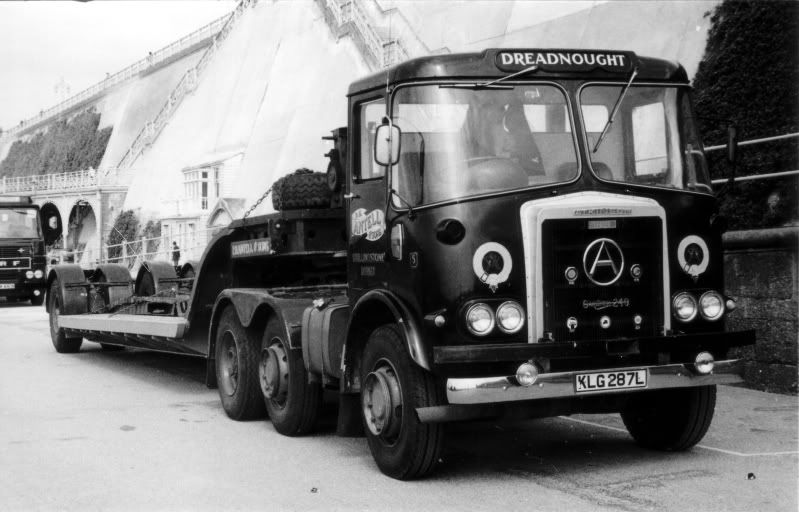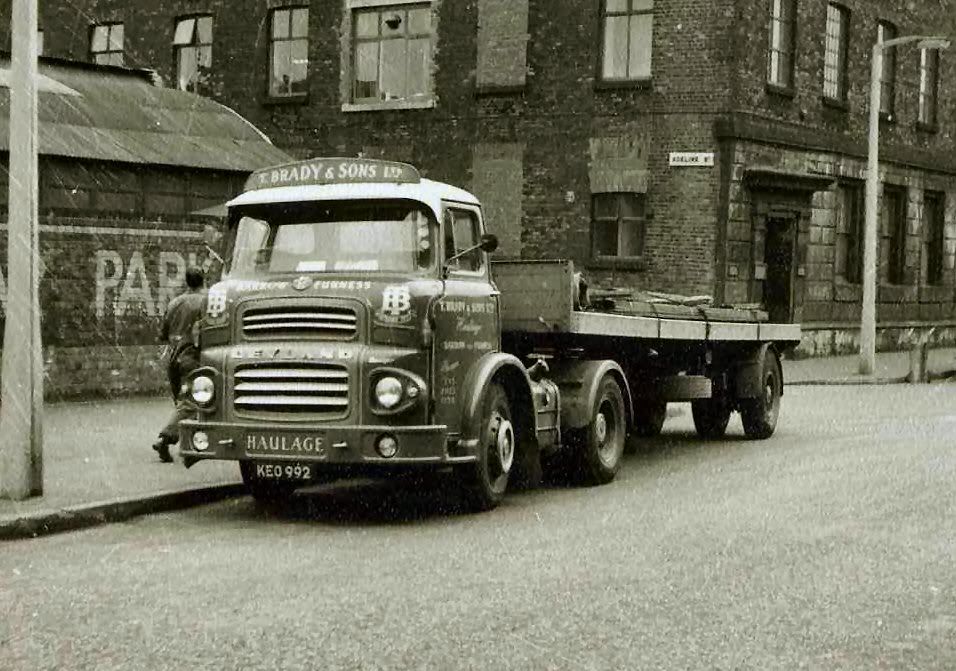Bewick:
Spot on John it does look a bit more substantialy built than the BTC 4-in-line.I wonder if the tyres were always as healthy looking as those four!!! and for the life of me I can’t understand why this configuration was un-stable was it bad driving or what? Cheers
There may have been an element of bad driving, but frankly you can get that with any configuration.
To my mind, and I pulled a Dodge/Boden 26ft 4-in-line combination for Hedly Shaw of Stapleford for quite a long time, the main problem was not rollover tendency on corners and roundabouts (I never had a ‘lifter’) but the terrible tail wagging that could start if the 4 tyres were not all precisely identical, most importantly, with equal pressures.
I once came down Symonds Yat, back loaded from S. Wales, at a very fair lick and it started. Side to side, they didn’t call them oscillating bogies for nothing except my whole trailer was oscillating, I used both lanes all the way down going faster and faster, didn’t dare touch the brakes, just kept the steering as straight as possible, straddling the centre line with eyes frozen straight ahead. 
When I finally managed to roll it into the caff at the bottom and pull on the handbrake I just sat there in total shock for about 10 minutes before staggering inside for a pint or two of very strong tea before setting off again.
Believe me I treated that outfit with much more respect after that.
I never had a puncture (I hardly dare write the word ‘blowout’, it doesn’t even bear thinking about) but it wasn’t just the inside tyre that was a cow to change, the outside one was almost as bad due to the fact that it was leaning over at that crazy angle. Getting a jack in between the 2 wheels must have been a nightmare.
I wonder, would it not have been better with a big jack and blocks to jack the chassis?
How did you heros who did one manage it? 

bumper





 PS on closer inspection this Badger looks to have the Leyland axle but there was a good number in the Brady fleet that did have the Eaton axle honest !!!
PS on closer inspection this Badger looks to have the Leyland axle but there was a good number in the Brady fleet that did have the Eaton axle honest !!!
